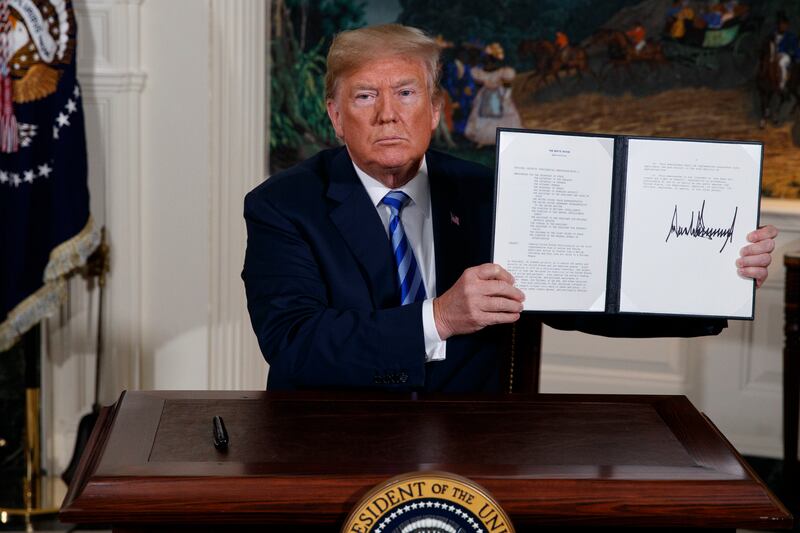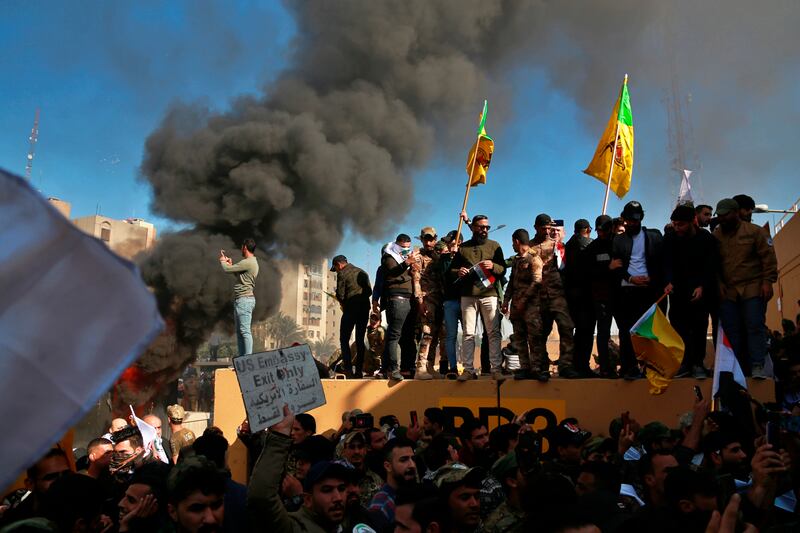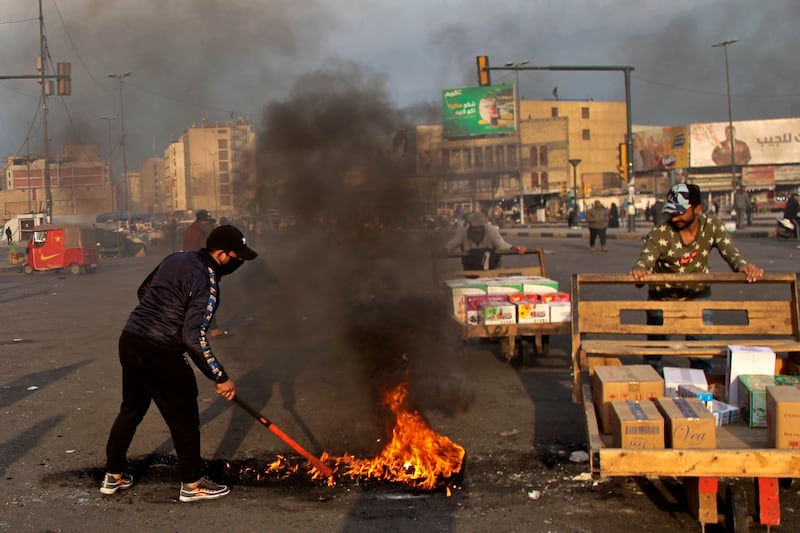Iran’s missile attack on two American bases in Iraq in response the the U.S. strike that killed its top general is the culmination of nearly two years of steadily rising tensions since President Donald Trump withdrew from Iran’s 2015 nuclear deal with world powers.
The two countries are now engaged in their most serious confrontation since the 1979 Islamic revolution and takeover of the U.S. Embassy. Both sides have signaled restraint following the missile attack, but the threat of an all-out war remains.
A timeline of the main events leading up to this week’s hostilities:
May 8, 2018: Trump announces that the U.S. is withdrawing from the nuclear deal signed by his predecessor, President Barack Obama, which had provided sanctions relief in exchange for restrictions on Iran’s nuclear program and stepped-up U.N. monitoring. Over the next several months, the U.S. ratchets up sanctions, exacerbating an economic crisis in Iran.

___
Nov. 5, 2018: U.S. imposes tough sanctions on Iran’s oil industry, the lifeline of its economy, as Secretary of State Mike Pompeo announces a list of 12 demands it must meet for sanctions relief. Iran rejects the wide-ranging demands, which include ending its support for armed groups in the region, withdrawing from the Syrian civil war and halting its ballistic missile program.
___
May 5, 2019: The U.S. announces the deployment of the USS Abraham Lincoln carrier strike group and a bomber task force in response to “a number of troubling and escalatory indications and warnings,” without providing details. It threatens “unrelenting force” in response to any attack.

___
May 8, 2019: Iran vows to enrich its uranium stockpile closer to weapons-grade levels if world powers fail to negotiate new terms for its nuclear deal. The European Union urges Iran to respect the nuclear deal and says it plans to continue trading with the country. Trump says he would like Iran’s leaders to “call me.”
___
May 12, 2019: The United Arab Emirates says four commercial ships off its eastern coast “were subjected to sabotage operations.” Trump warns that if Tehran does “anything” in the form of an attack, “they will suffer greatly.”
___
June 13, 2019: Two oil tankers near the strategic Strait of Hormuz are hit in an alleged assault that leaves one ablaze and adrift as 44 sailors are evacuated from both vessels and the U.S. Navy rushes to assist. America later blames Iran for the attack, something Tehran denies.

___
June 20, 2019: Iran’s Revolutionary Guard shoots down a U.S. military surveillance drone. Trump says he called off a planned retaliatory strike on Iran over concerns about casualties.
___
July 1, 2019: Iran follows through on a threat to exceed the limit set by the nuclear deal on its stockpile of low-enriched uranium, which is used for civilian applications and not for nuclear weapons.
___
Sept. 14, 2019: A drone attack on Saudi oil facilities temporarily cuts off half the oil supplies of the world’s largest producer, causing a spike in prices. The U.S. says Iran carried out the attack directly, calling it an “act of war” against Saudi Arabia. Iran denies involvement, while the Iran-backed Houthi rebels in Yemen claim responsibility.
___
October 2019: Massive anti-government protests erupt in Lebanon and Iraq. While the protests are primarily driven by economic grievances, they target governments that are closely allied to Iran. In Iraq, protesters openly decry Tehran’s influence and attack Iranian diplomatic facilities.

___
November 2019: Protests break out in some 100 cities and towns in Iran after authorities raise the price of gasoline. The scale of the protests and the resulting crackdown are hard to determine as authorities shut down the internet for several days. Amnesty International later estimates that more than 300 people were killed.
___
Dec. 27, 2019: A U.S. contractor is killed and several American and Iraqi troops are wounded in a rocket attack on a base in northern Iraq. The U.S. blames the attack on Kataeb Hezbollah, one of several Iran-backed militias operating in Iraq.
___
Dec. 29, 2019: U.S. airstrikes hit Kataeb Hezbollah positions in Iraq and Syria, killing at least 25 fighters and bringing vows of revenge. Iraq calls the strikes a “flagrant violation” of its sovereignty.
___
Dec. 31, 2019: Hundreds of Iran-backed militiamen and their supporters barge through an outer barrier of the U.S. Embassy in Baghdad and hold two days of violent protests in which they smash windows, set fires and hurl rocks over the inner walls. U.S. Marines guarding the facility respond with tear gas. There are no casualties on either side.

___
Jan. 3: A U.S. airstrike near Baghdad’s international airport kills Gen. Qassem Soleimani, the leader of Iran’s elite Quds Force and the mastermind of its regional military interventions. A senior commander of Iran-backed militias in Iraq is also killed in the strike. Iran vows “harsh retaliation.” Trump says he ordered the targeted killing to prevent a major attack. Congressional leaders and close U.S. allies say they were not consulted on the strike, which many fear could ignite a war.

___
Jan. 5: Iran announces it will no longer abide by the nuclear deal and Iraq’s parliament holds a non-binding vote calling for the expulsion of all U.S. forces. Some 5,200 American troops are based in Iraq to help prevent a resurgence of the Islamic State group. Trump vows to impose sanctions on Iraq if it expels U.S. troops.
___
Jan. 8: Iran launches several ballistic missiles on two bases in Iraq housing American troops in what it says is retaliation for the killing of Soleimani. There are no immediate reports of U.S. or Iraqi casualties. Trump tweets that “All is well!” and says he will deliver a statement Wednesday. Iran’s supreme leader says “we slapped them on the face” but that “military action is not enough.”

